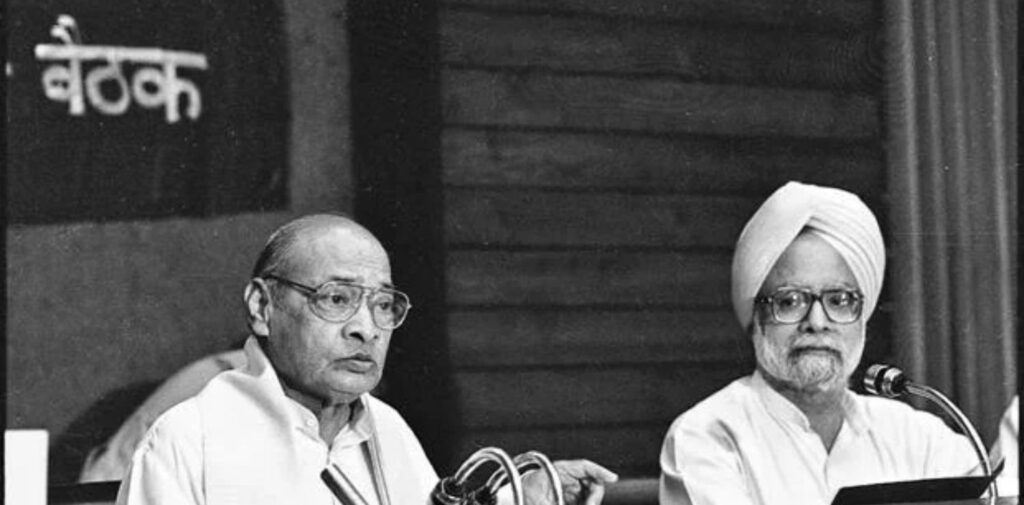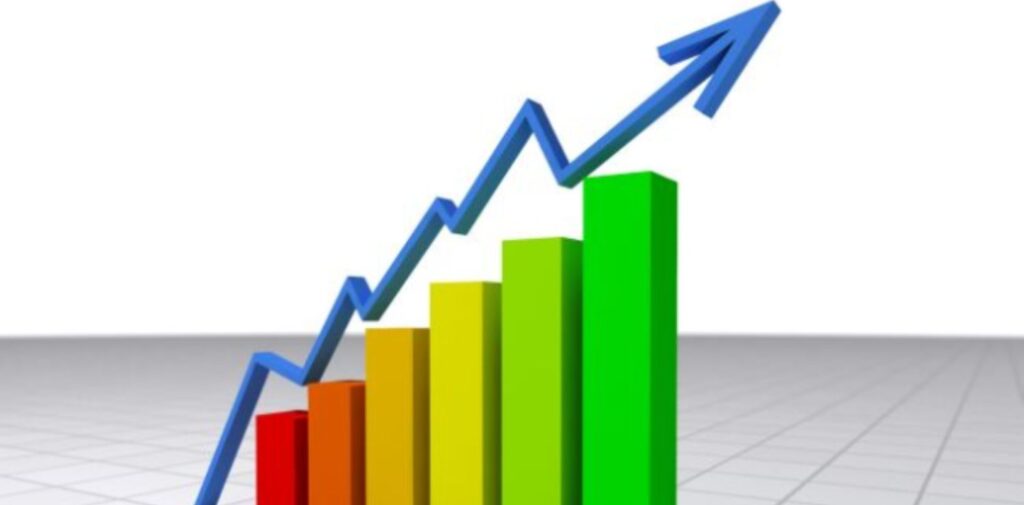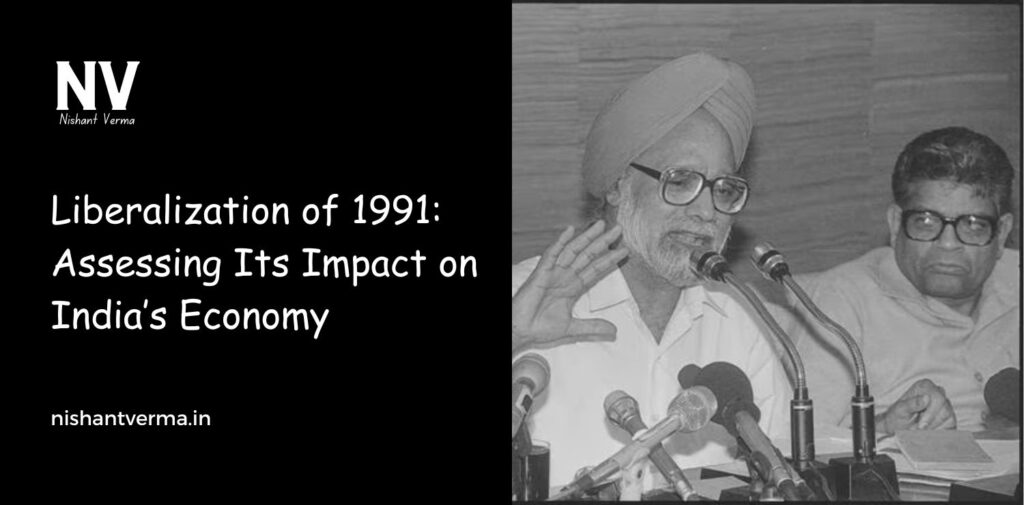In 1991, India experienced a major change in how its economy worked. This change is known as “Liberalization.” Liberalization was a process where India opened up its economy to the world and introduced many new policies to help businesses grow, attract investments, and improve the standard of living for its citizens. This was a big moment in India’s history, especially after gaining independence in 1947. The 1991 economic reforms changed the way India interacted with the global economy and made it one of the fastest-growing economies in the world.
Let’s look at what happened during the Liberalization of 1991, why it was needed, and how it impacted India’s economy in the long run.

What Was the Liberalization of 1991?
Liberalization of 1991 refers to a series of economic reforms introduced by the Indian government in response to a financial crisis. Before 1991, India followed a controlled economy where the government had strict rules about what businesses could do. The government controlled industries, and there were many restrictions on foreign trade and investments.
In 1991, the Indian government, led by Prime Minister P.V. Narasimha Rao and Finance Minister Dr. Manmohan Singh, decided to make major changes. The government removed many of the restrictions on businesses, allowed more foreign trade, and encouraged private companies to grow. This shift from a closed economy to a more open and globalized one is what we call Liberalization.
Why Was Liberalization Needed?
Before 1991, India faced a lot of economic problems. The country was growing slowly, and the government’s strict rules were making it hard for businesses to expand. The country also had a huge debt from borrowing money, which meant it was spending more than it was earning. In 1991, India was running out of foreign exchange reserves, which are the money needed to buy things from other countries. To make matters worse, India’s credit rating (which tells other countries how likely India was to repay its debts) was very low.
This situation became a crisis. The government had to make changes quickly to avoid further damage. So, they decided to open up the economy, reduce government control, and encourage businesses to grow by introducing new policies. This process of opening up the economy is called Liberalization.
Key Changes in 1991
The Liberalization of 1991 brought several key changes to India’s economy:
- Reduction in Import Restrictions: India removed many restrictions on importing goods from other countries. Before this, the government controlled what could be brought into the country and how much it would cost. With Liberalization, businesses were allowed to import more goods, which gave people access to better quality products from around the world.
- Encouragement for Private Businesses: The government allowed private companies to play a bigger role in the economy. Before 1991, many industries were controlled by the government. After Liberalization, private companies were encouraged to invest and grow. This led to the rise of new businesses in sectors like telecom, retail, and automobiles.
- Foreign Investment: The government opened up the Indian market to foreign investors. This meant that foreign companies could invest in Indian businesses, and Indian companies could also invest abroad. More foreign investments helped bring in new technology, create jobs, and boost the economy.
- Tax Reforms: The government introduced new tax policies to make the economy more efficient. Taxes were simplified, and businesses found it easier to operate. This also helped increase the revenue that the government earned, which was important for development.
- Devaluation of the Rupee: The government allowed the Indian currency (the rupee) to lose some of its value in relation to other currencies. This made Indian goods cheaper for people in other countries, which helped Indian businesses export more products. This was a step towards making India’s economy more competitive globally.

Positive Impacts of Liberalization on India’s Economy
The Liberalization of 1991 had many positive effects on India’s economy, and the country has seen growth in several areas since then.
- Economic Growth: One of the biggest outcomes of Liberalization was the fast economic growth that followed. As businesses grew, new industries started, and jobs were created. India’s GDP (Gross Domestic Product), which measures the size of the economy, grew rapidly. Between 1991 and 2010, India’s economy grew at an average rate of about 6-7% per year.
- Increase in Foreign Investments: After Liberalization, foreign companies started investing in India. This led to the growth of industries such as information technology (IT), telecommunications, and retail. Global companies like McDonald’s, Coca-Cola, and Pepsi entered the Indian market, bringing with them new products and services. This helped modernize India’s economy and made it more competitive.
- Rise of the Middle Class: As India’s economy grew, more people started getting better jobs and earning more money. This led to the rise of a large middle class in India. The middle class could now afford more goods and services, which helped improve the standard of living for many people. People started spending more on things like cars, mobile phones, and vacations, which further boosted the economy.
- Improved Infrastructure: Liberalization led to an improvement in infrastructure, such as roads, airports, and telecommunications. With the entry of foreign businesses and investments, India’s cities became better connected. This made it easier for businesses to operate, and it also improved the lives of people living in urban areas.
- Technology and Innovation: With the opening of the economy, India gained access to new technology and innovations. For example, the information technology (IT) sector exploded after 1991. Indian companies like Infosys and TCS became global leaders in IT services. The use of computers, the internet, and mobile phones grew rapidly in India, making it one of the largest technology markets in the world.

Negative Impacts of Liberalization on India’s Economy
While the Liberalization of 1991 had many benefits, it also created some challenges and problems.
- Increase in Income Inequality: Not everyone benefited equally from Liberalization. While some people became very rich, others were left behind. The rise of the middle class did not reach all sections of society, especially in rural areas. Many poor people continued to struggle, and the gap between the rich and the poor widened.
- Unemployment in Some Sectors: While new industries and jobs were created, some sectors faced difficulties. For example, many government-owned industries were privatized or shut down, leading to job losses. Traditional industries, like textiles and agriculture, struggled to compete with global competition. This caused unemployment in certain areas.
- Overdependence on Foreign Capital: India’s economy became more dependent on foreign investments and loans after Liberalization. While this helped the economy grow, it also made India vulnerable to changes in the global economy. If foreign investors pulled out their money, it could cause problems in India’s economy.
- Environmental Concerns: With the growth of industries and businesses, there were increased concerns about pollution and environmental damage. Many companies, in their drive for profit, did not always follow environmental regulations, leading to air, water, and soil pollution.
Conclusion
The Liberalization of 1991 was a turning point in India’s economic history. It helped transform India from a closed, controlled economy to an open, globalized one. The economy grew rapidly, businesses flourished, and the standard of living for many people improved. However, the benefits of Liberalization were not evenly spread, and some sections of society faced challenges.
Today, India’s economy is one of the fastest-growing in the world, and the effects of the 1991 reforms are still visible in many aspects of life. While there are still challenges to address, such as poverty, inequality, and environmental damage, Liberalization has played a major role in shaping India’s modern economy and its place in the global market.
In the end, the Liberalization of 1991 was not just about opening up markets—it was about giving India the opportunity to grow, compete, and thrive in a globalized world.




